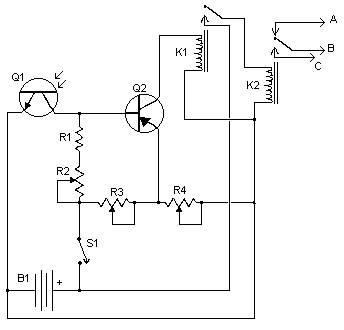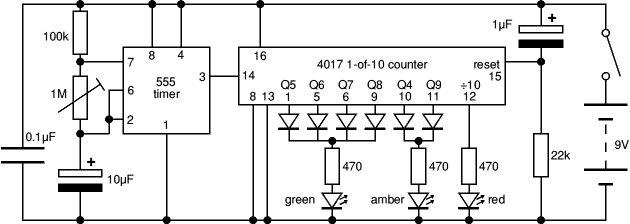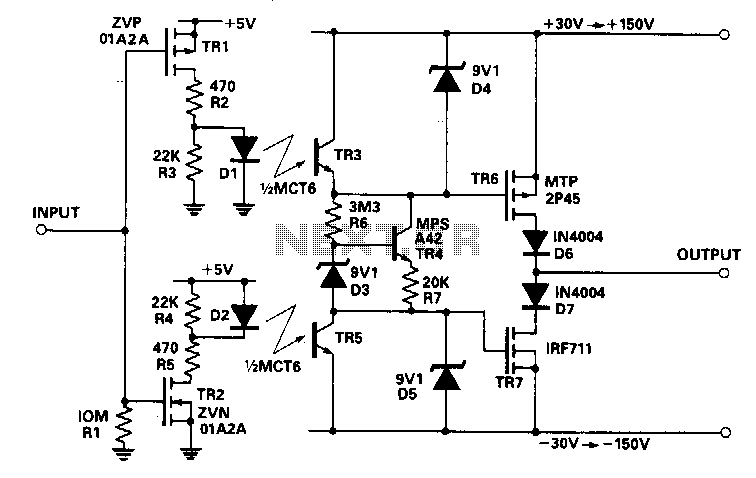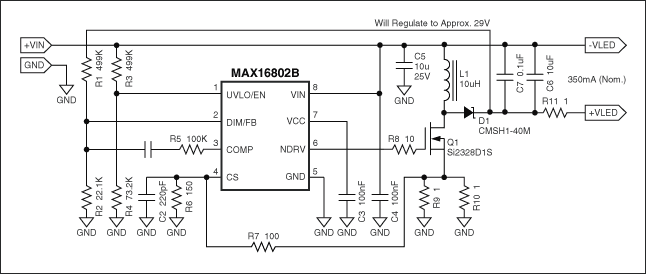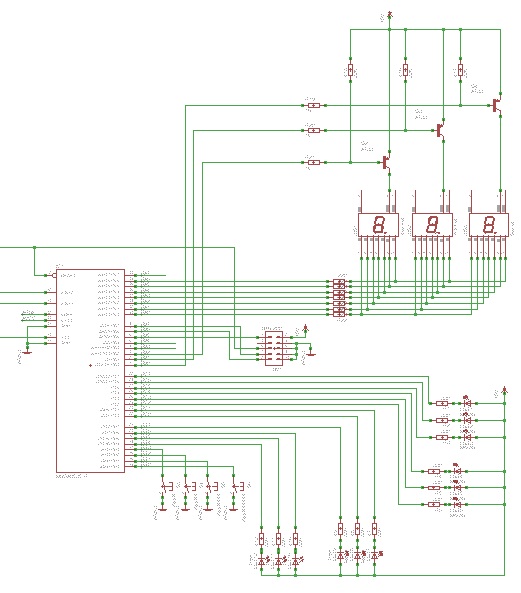
Triac light driver
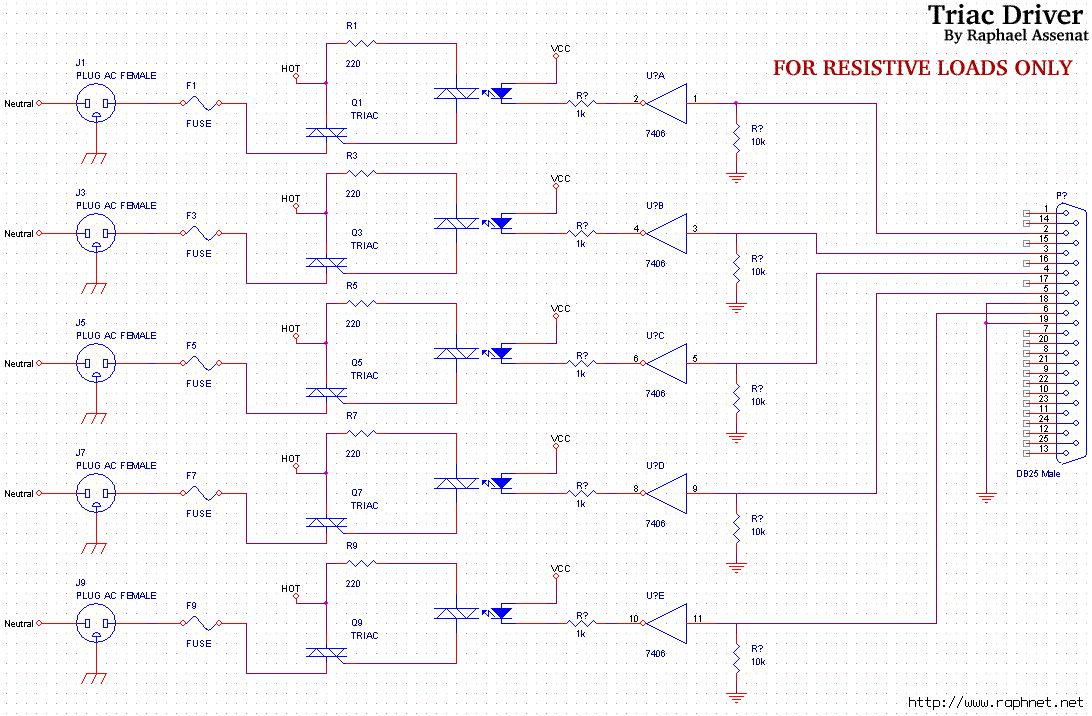
Controlling room lighting using a computer. Triacs and opto-couplers have been purchased for this purpose. A schematic was drawn and a prototype was built, which functioned correctly. Although not visible in the pictures, there is a cable extending from the box that connects to the PC's parallel port. The small grey box in the leftmost picture houses a 7805 voltage regulator and a 74LS06 hex inverting buffer to drive the opto-couplers.
The circuit design for controlling room lighting via a computer employs triacs and opto-couplers to manage the AC load effectively. The triacs serve as electronic switches that can control high voltage and current, allowing for the operation of standard lighting fixtures. The opto-couplers isolate the low-voltage control signals from the high-voltage lighting circuit, ensuring safety and preventing interference.
The schematic features a connection from the computer's parallel port to the opto-couplers, which are activated by the digital signals sent from the PC. When a signal is received, the opto-coupler allows current to flow to the gate of the triac, triggering it to conduct and thus powering the connected lighting. The use of a 7805 voltage regulator ensures that the circuit receives a stable 5V supply, which is essential for the proper operation of the opto-couplers and any associated logic circuitry.
The 74LS06 hex inverting buffer is used to drive the opto-couplers, providing the necessary current to ensure reliable operation. The design allows for multiple lighting circuits to be controlled independently or in unison, depending on the configuration of the software running on the computer. Overall, this setup provides a flexible and efficient means of controlling room lighting, integrating seamlessly with existing computer systems.Controlling room lighting using computer. I bought some triacs and opto couplers to do this. I drew the schematic and built a prototype. Everything worked well. We cannot see it on the pictures, but there is a cable going out of the box that plugs in the PC parallel port. The small grey box on the leftmost picture contains a 7805 and a 76ls06 to driver the opto couplers. 🔗 External reference
The circuit design for controlling room lighting via a computer employs triacs and opto-couplers to manage the AC load effectively. The triacs serve as electronic switches that can control high voltage and current, allowing for the operation of standard lighting fixtures. The opto-couplers isolate the low-voltage control signals from the high-voltage lighting circuit, ensuring safety and preventing interference.
The schematic features a connection from the computer's parallel port to the opto-couplers, which are activated by the digital signals sent from the PC. When a signal is received, the opto-coupler allows current to flow to the gate of the triac, triggering it to conduct and thus powering the connected lighting. The use of a 7805 voltage regulator ensures that the circuit receives a stable 5V supply, which is essential for the proper operation of the opto-couplers and any associated logic circuitry.
The 74LS06 hex inverting buffer is used to drive the opto-couplers, providing the necessary current to ensure reliable operation. The design allows for multiple lighting circuits to be controlled independently or in unison, depending on the configuration of the software running on the computer. Overall, this setup provides a flexible and efficient means of controlling room lighting, integrating seamlessly with existing computer systems.Controlling room lighting using computer. I bought some triacs and opto couplers to do this. I drew the schematic and built a prototype. Everything worked well. We cannot see it on the pictures, but there is a cable going out of the box that plugs in the PC parallel port. The small grey box on the leftmost picture contains a 7805 and a 76ls06 to driver the opto couplers. 🔗 External reference
